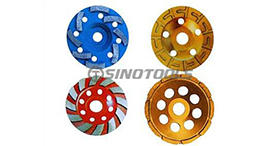Although they look similar, saw blades are designed for specific tools and uses!
In addition to the brand of saw blades, choosing the right type of Circular Saw Blade determines whether a high-quality saw can be obtained, and in most cases, the saw blade provided with the new tool may be more suitable for on-site cutting. In fact, in the wood processing process, due to the difference in equipment, the use occasions and functions of saw blades are also different. In order to focus on the discussion of saw blades for workshops such as table saws, we are not concerned about the wider uses and materials of saw blades. , Specifications, technical parameters, and types for detailed discussion.
If you want to find the right saw blade, you must understand the following ten points. China Circular Saw Blades supplier will introduce to you:
■Saw blade diameter
Each type of mechanical equipment and hand-held power tools usually only accept saw blades of a specific size: for table saws, usually 254mm (usually 250mm for saw blades sold in the domestic market); for hand-held circular saws, usually 165mm or 190mm; for miter cutting Saws and rocker saws, usually 254mm or 304mm; for sliding table saws, usually 315mm or 350mm, or even larger diameter saw blades. These tools and equipment can use smaller saw blades (such as dado saw blades), but if the use range of the saw blade is set, do not try to use a larger saw blade. It may be difficult to find replacement saw blades of certain sizes, so consider whether the saw blade is suitable and usable before buying.
■Saw/saw road
The saw slit/saw path is also called notch. The “cut” of the saw blade refers to the thickness of the groove that the saw blade will cut. It is also usually used to define the thickness of the saw blade itself or at least the widest point on the saw blade. Thickness affects cutting width, cost, power consumption, and wood loss during processing. The cut is usually wider than the saw blade base. If you look at the structure of the carbide circular saw blade, you will see that the saw teeth are welded to the saw blade and are thicker than the saw blade body. For high-speed steel saw blades, although the saw path is still thicker than the saw blade, the saw teeth and the saw blade are integrated. This is due to the "offset" of the teeth and the blade. This means that they are slightly bent to one side, alternating from one tooth to the next. Another thing that may affect the saw gap is the flatness of the saw blade. If the saw blade is slightly warped, the teeth will not follow each other in exactly the same straight line but will swing back and forth, just like a car tire mounted on a curved rim. This oscillation actually causes the saw blade to cut teeth that are wider than the allowable thickness of the teeth.
Since metal plates are usually rolled in a forging plant, then unrolled and cut into plates, it may not be completely flat before manufacturing. The eye may not see the bending amount of the saw blade, but it may still cause the sawing groove to be larger than the thickness of the saw blade and teeth. Very high-grade saw blades are made of unrolled steel from steel mills. This kind of steel is much more expensive than ordinary steel, and the processing technology during processing is complicated. Saw blades made of this steel will not swing so that the cutting is as smooth and clean as possible.
The thicker the saw blade, the less likely it is to bend (the wider the cut). Therefore, heavy-duty fixed table saws usually use 3.2mm saw blades, because the power provided by this type of table saw can easily cut high-density hardwood. For table saws, miter saws, and radial saws with a motor rated power of 1.1kw or less, use thin-cut saw blades (approximately 2.4mm) to obtain greater performance power. Portable circular saws, especially lithium battery hand-held circular saws, use even thinner blades. It is almost impossible to find a 3.2mm saw blade for a portable saw. These ultra-thin saw blades exert less stress on the saw motor and will not bend significantly due to their smaller diameter.

Circular Saw Blade
■Tooth type
Nowadays, almost all saw blades used have carbide teeth, and their sharpness is longer than that of all-saw blades. The manufacturer grinds the teeth into the shape that best suits the specific cutting action. If you look closely at the surface of the teeth, you will see that the teeth are ground into a certain shape. For example, the use of alternating left and right beveled teeth (ATB) can minimize the edge chipping of wood and veneer plywood. This tooth profile is used for general purpose, crosscut and plywood/melamine saw blades. The same is true for crosscut saws in our hand saws. Class tooth shape. The flat-tooth (FTG) saw blade used for slitting has flat teeth and no bevel, which helps to remove debris on the kerf. The combined tooth profile uses a mixture of ATB and FTG teeth and is better than general saw blades in cross-cutting, but it will not chip. Saw blades for cutting hard surface countertops or melamine-coated particleboard use a trapezoidal flat tooth (TCG) shape to prevent edge chipping.
没有评论:
发表评论